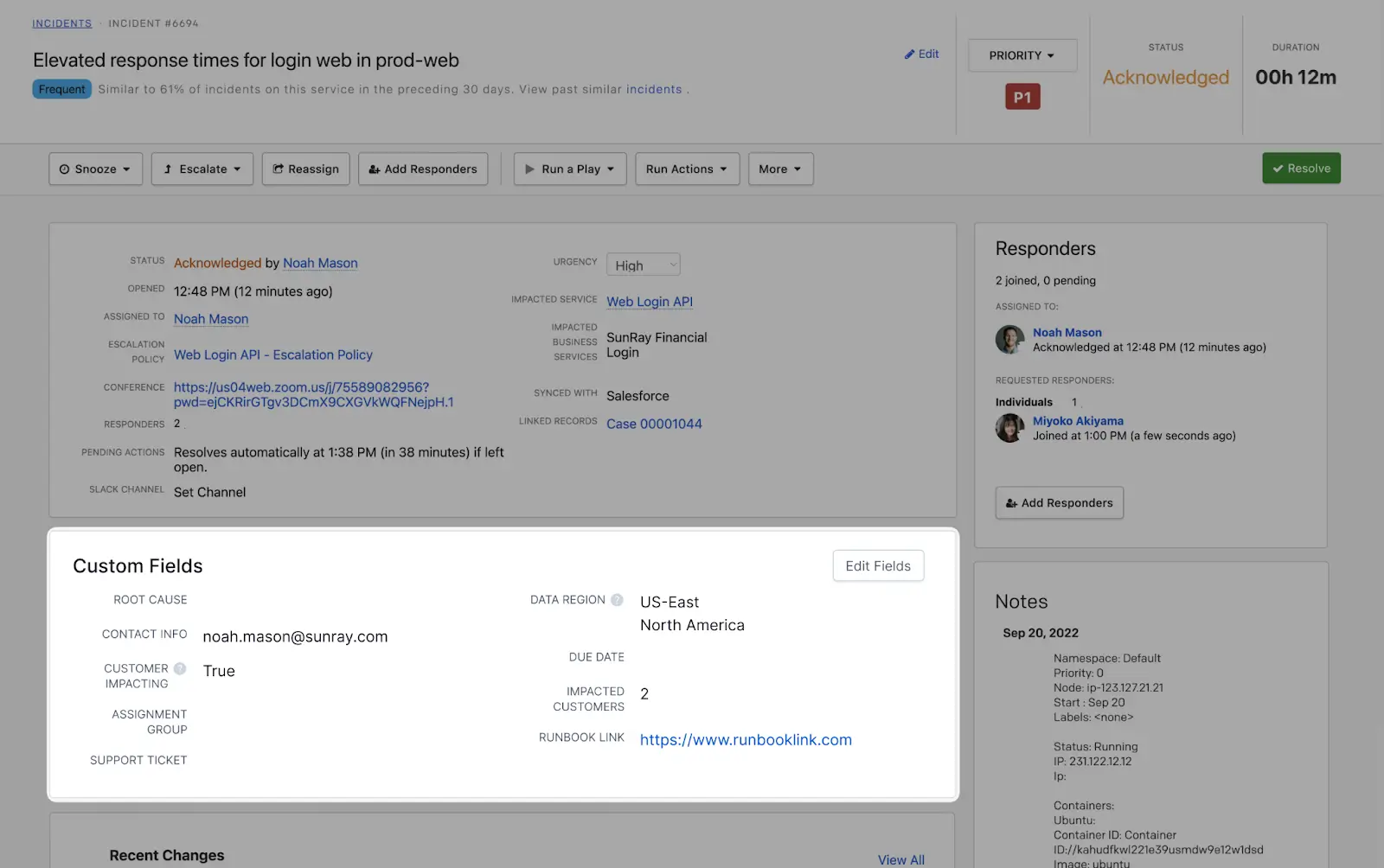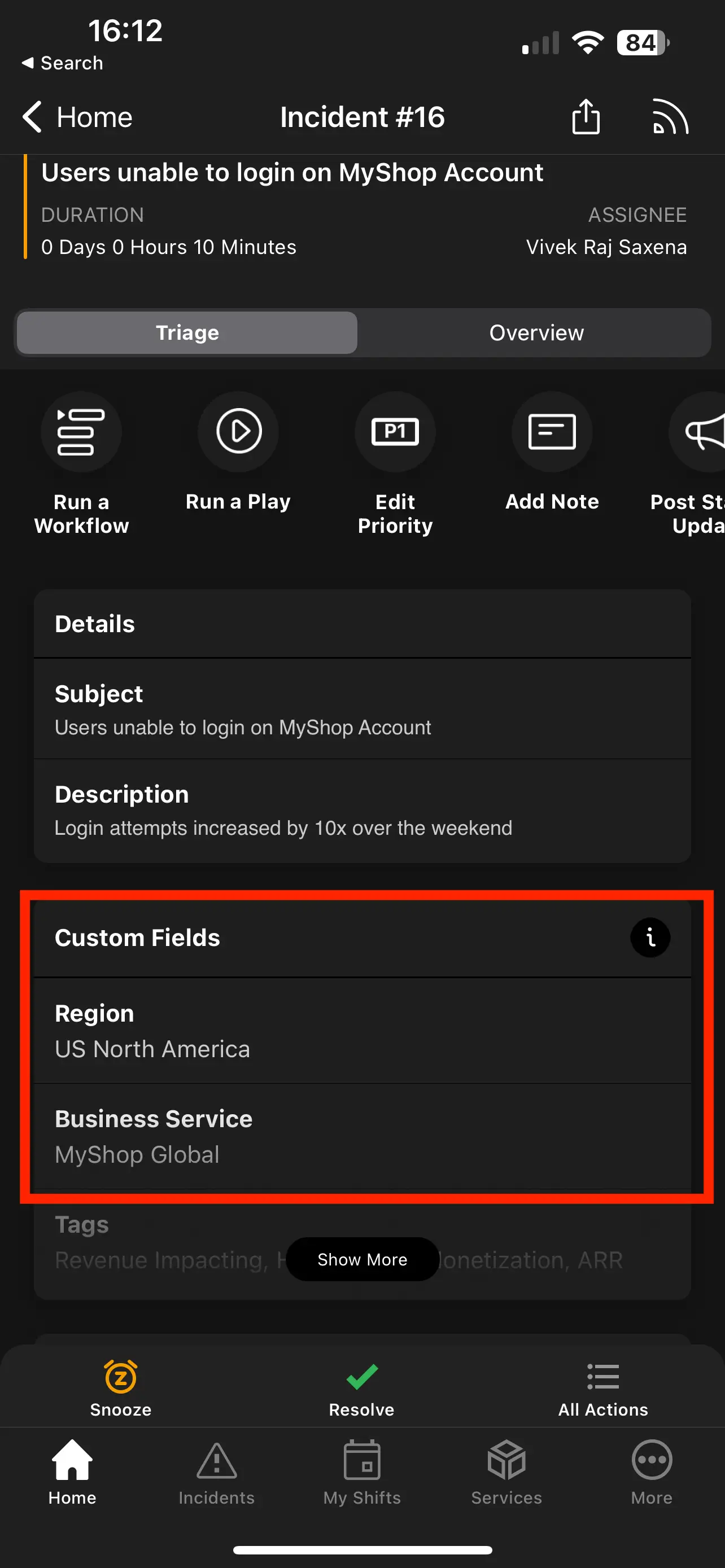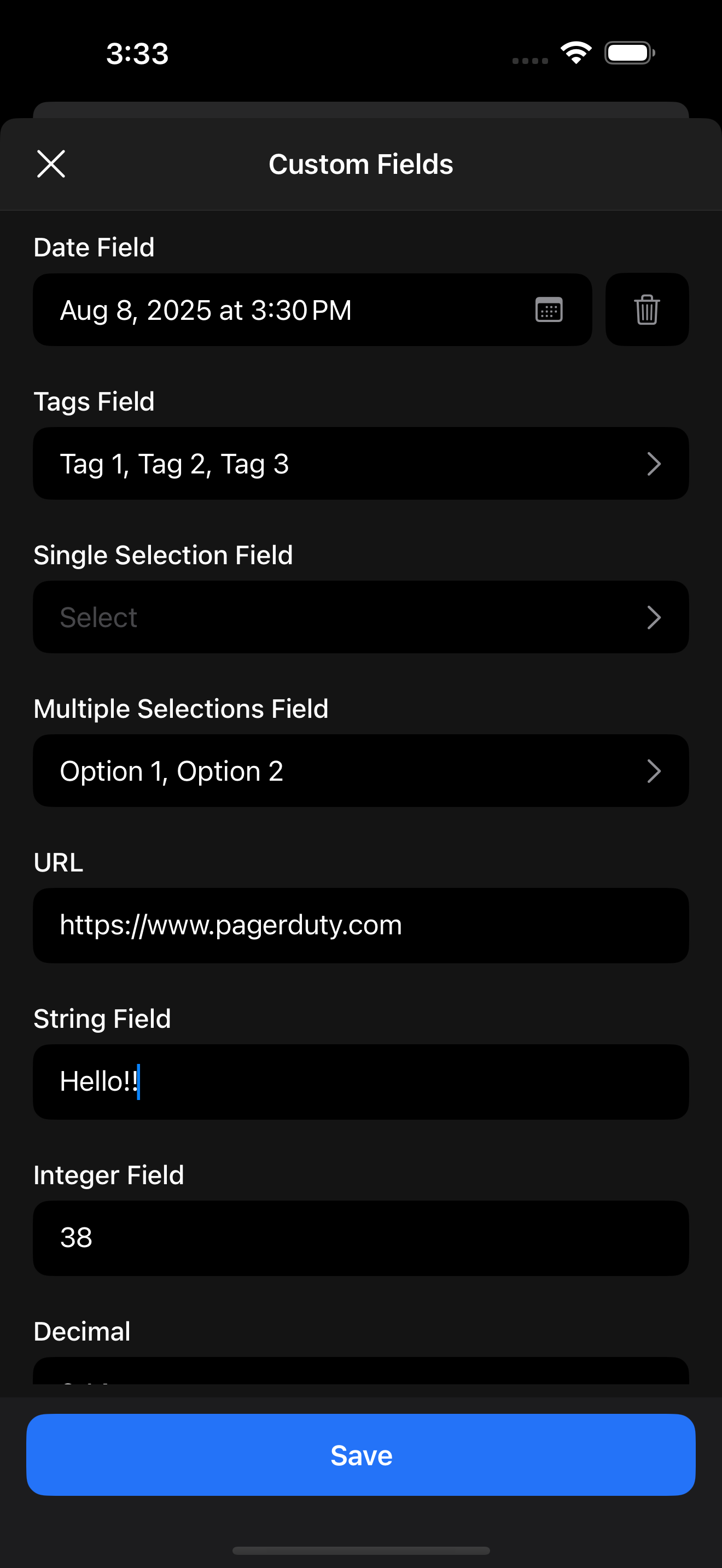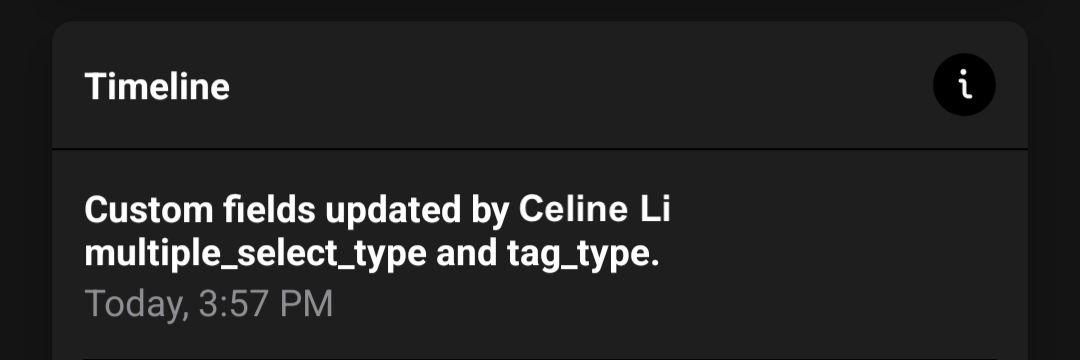Custom Fields on Incidents
Customize metadata fields for streamlined tracking and standardized information display
The Custom Fields feature allows you to enrich PagerDuty incidents with critical and helpful metadata throughout the incident lifecycle. Flexibly define your preferred data, and standardize what information your incidents display. This feature also allows you to aggregate data from several existing systems and populate that information during incident response.
Availability
This feature is available with the Business, Enterprise for Incident Management and Digital Operations (Legacy) pricing plans. Please contact Sales to upgrade to a plan with this feature.

Configure Custom Fields
Create a Custom Field
After creating an Incident Type, you can add custom fields to that type. Please note that because Incident Types use inheritance, fields will be available to the specific incident type you add, as well as any children of that incident type.
Custom Fields Availability
On the Base Incident Type, we allow:
- 15 fields for accounts on our Business plan
- 30 fields for accounts on our Enterprise plan for Incident Management
For all other Incident Types, we allow an additional 15 custom fields. For example, your base incident could have 30 fields, and you could add an additional 15 to your major incident. Disabled custom fields do count towards this limit.
Required User Permissions
Admins and the Account Owner can create, edit and delete fields.
-
Navigate to Incidents Incident Types and select an Incident Type, or create a new Incident Type.
-
With the Fields tab selected, click New Field.
-
Enter the following information:
Field Instructions Display Name Enter a name for the field that will display on incidents. Field Name Enter a name for use when referencing this field in the API. Can only contain lowercase letters, numbers, and underscores. Note: You cannot change this value after initial creation. Description Write a description to help responders understand what this field is or how they should use it. Field Type Select a data type, e.g., Text, Single Select, Multi Select, etc. Note: You cannot change this value after initial creation. Set a Default Value Optionally pre-populate the field for new incidents. This value will not apply to past incidents. Enable Field Select Enable or Disable. -
Click Create Field. Repeat these steps for as many fields as needed.
Edit a Custom Field
- Navigate to Incidents Incident Types.
- Click the menu to the right of the field you would like to edit and select Edit.
- Edit your preferred details and then click Update Field.
Disable a Custom Field
When you disable a field, it is no longer editable on new or existing incidents. However, this will not erase values from existing incidents (i.e., they will still be visible on the incident details page). You should disable fields when you want to maintain existing data, but no longer want to use the field.
- Navigate to Incidents Incident Types and select your preferred Incident Type.
- To the right of your desired field, select Disable.
- In the confirmation modal, click Disable.
Delete a Custom Field
Deletion Warning
Deleting a field on an Incident Type will permanently delete the field for all Incident Types. This also removes the field and values from existing incidents. This action cannot be undone.
- Navigate to Incidents Incident Types and select your preferred Incident Type.
- To the right of your desired field, select Delete.
- In the confirmation modal, click Delete.
Field Types
You can specify the field data type when you add a Custom Field. Data types help standardize and validate field data, preventing users from entering incorrect data types into a field. The following field types are available:
- Text
- Single Select
- Multiple Select
- Tag
- URL
- Checkbox
- Datetime
- Decimal
- Integer
Field Restrictions
- String values have a maximum of 255 characters.
- Single Select and Multiple Select field types can have a maximum of 100 options.
- Tags
- A tag can be up to 255 characters.
- A Custom Field can have a maximum of 55 tags.
- Each Multiple Select option has a maximum of 70 characters.
- URL values can have a maximum of 500 characters. Only absolute URLs are allowed, and they must use one of the following schemes:
http,https,tel.- Datetime values must conform to either full-date or date-time RFC3339, section 5.6. Examples of supported values:
2022-03-14,2019-08-28T10:43:05Z.
View Custom Fields
Required User Permissions
Users with permission to view and edit an incident can also view and edit that incident's Custom Fields.
There are two places to view Custom Fields on incidents:
View Custom Fields in the Web App
To view Custom Fields in the web app, navigate to an incident's details page and scroll to the Custom Fields section.

Custom fields in the web app
Edit Custom Field Values in the Web App
Custom Fields with default values will be prefilled, but fields may also be empty and intended for the responder to fill out during incident response.
- Navigate to an incident's details page and click Edit Fields in the Custom Fields section.
- In the right pane, enter your desired value(s) for each Custom Field.
- Click Save.
When a responder updates a Custom Field's value, the action adds a log entry to the incident's timeline.

Custom field in the incident timeline
View Custom Fields in the Mobile App
For incidents with Custom Fields defined, you can view them in the mobile app on an incident's details screen by selecting the Triage tab and scrolling to the section Custom Fields. If there are more than three Custom Fields defined, tap Show More to expand the section and view all Custom Fields.

Custom fields in the mobile app
Edit Custom Field Values in the Mobile App
- Navigate to an incident's details page by tapping the incident.
- Under Custom Fields, tap Edit Custom Fields.
- Enter your desired value(s) for each Custom Field.
- Tap Save.

Edit Custom Field values in the mobile app
When a responder updates a Custom Field's value, the action adds a log entry to the incident's timeline.

Sync PagerDuty Custom Fields with ServiceNow Incident Record Fields
Please read our Custom Field Mappings article for more information on bi-directionally syncing PagerDuty Custom Fields with ServiceNow Incident record fields.
Set Custom Field Values with Event Orchestration
Please see our Event Orchestration article for more information.
Update Custom Field Values with Slack
Please see our Slack User Guide for more information.
Update Custom Field Values with Microsoft Teams
Please see our Microsoft Teams User Guide for more information.
FAQ
What happens to active incidents if I add or remove a Custom Field?
Custom Fields apply across all incidents on an account. This means that if you create a new Custom Field, that field will appear on all incidents previously created on your account. Similarly, if you delete a Custom Field, it will no longer appear on incidents on your account.
When adding a new field, default values will not apply to previously created incidents — those incidents will have null values.
How many Custom Fields can I create?
Customers with a Business pricing plan can create up to 15 active Custom Fields on incidents. Customers with an Enterprise for Incident Management plan can create an additional 15 Custom Fields, for a total of 30.
Please contact our Sales team if you'd like to upgrade to a plan that offers more Custom Fields.
How can I analyze or run a report on Custom Fields data?
Custom Fields are supported in the Incident Activity report and can be added as additional columns to the report.
Updated about 2 months ago
